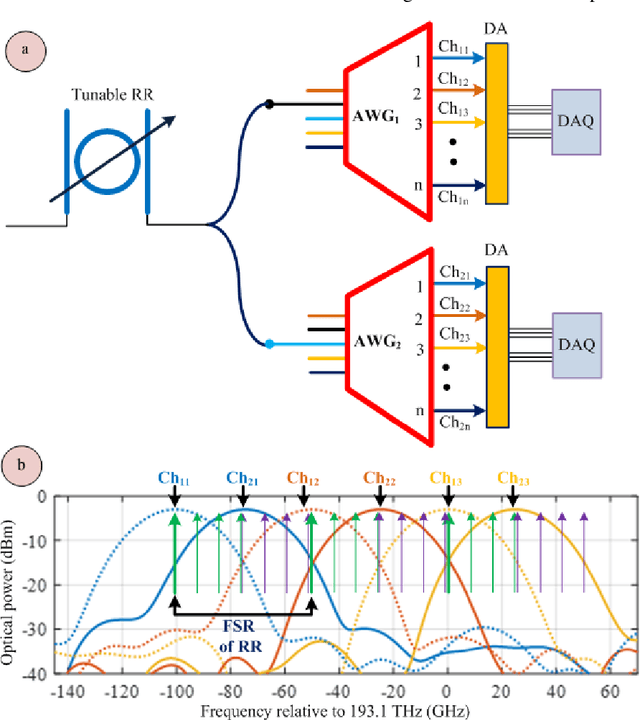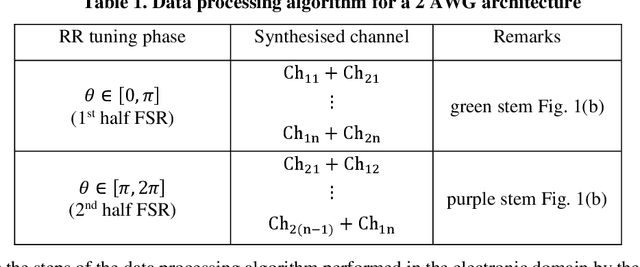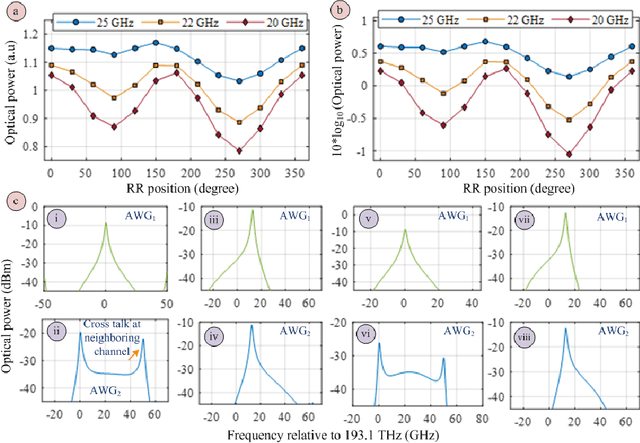Trevor Hall
Continuous tuning & thermally induced frequency drift stabilisation of time delay oscillators such as the optoelectronic oscillator
Jan 12, 2023Abstract:Delay line oscillators based on photonic components, such as the optoelectronic oscillator (OEO), offer the potential for realization of phase noise levels orders of magnitude lower than achievable by conventional microwave sources. Fibre optic-based delay lines can realize the large delay required for low phase noise systems whilst simultaneously achieving insertion loss levels that can be compensated by available microwave and photonic amplification technologies. However, the long fibre is vulnerable to environmental perturbations such as mechanical vibrations and variations in ambient temperature, which result in short term fluctuations and thermally induced drift of the oscillation frequency. The phase shifter used conventionally to adjust the frequency of an OEO to enable phase lock has a finite range that is insufficient to compensate the delay change resulting from operational temperature ranges. A solution to continuous tuning without mode-hopping and to compensation of thermally induced frequency drift without loss of lock of a time delay oscillator is proposed. The basic concept is to introduce a tuning mechanism that works with Cartesian co-ordinates on the complex plane and to avoid explicit use of polar co-ordinates. Consequently, the transmission of the tuning component may traverse the unit circle in either direction multiple times without range limitation to the phase. Thereby tuning by mode-hopping is avoided and expedients to stabilisation, such as the use of tunable lasers within a control loop or precision temperature stabilisation measures are not required. The concept is verified by Simulink simulations. The method has been experimentally tested successfully using a prototype OEO phase locked to a system reference. Solid lock was maintained even when the OEO was placed in an oven and cycled over a temperature range from ambient to 80 {\deg}C.
Circuit design and integration feasibility of a high-resolution broadband on-chip spectral monitor
Aug 12, 2021



Abstract:Up-to-date network telemetry is the key enabler for resource optimization by a variety of means including capacity scaling, fault recovery, network reconfiguration. Reliable optical performance monitoring in general and specifically the monitoring of the spectral profile of WDM signals in fixed- and flex-grid architecture across the entire C-band remains challenging. This article describes a spectrometer circuit architecture along with an original data processing algorithm that combined can measure the spectrum quantitatively across the entire C-band aiming at 1 GHz resolution bandwidth. The circuit is composed of a scanning ring resonator followed by a parallel arrangement of AWGs with interlaced channel spectra. The comb of ring resonances provides the high resolution and the algorithm creates a virtual tuneable AWG that isolates individual resonances of the comb within the flat pass-band of its synthesized channels. The parallel arrangement of AWGs may be replaced by a time multiplexed multi-input port AWG. The feasibility of a ring resonator functioning over whole C-band is experimentally validated. Full tuning of the comb of resonances over a free spectral range is achieved with a high-resolution bandwidth of 1.30 GHz. Due to its maturity and low loss, CMOS compatible silicon nitride is chosen for integration. Additionally, the whole system demonstration is presented using industry standard simulation tool. The architecture is robust to fabrication process variations owing to its data processing approach.
 Add to Chrome
Add to Chrome Add to Firefox
Add to Firefox Add to Edge
Add to Edge